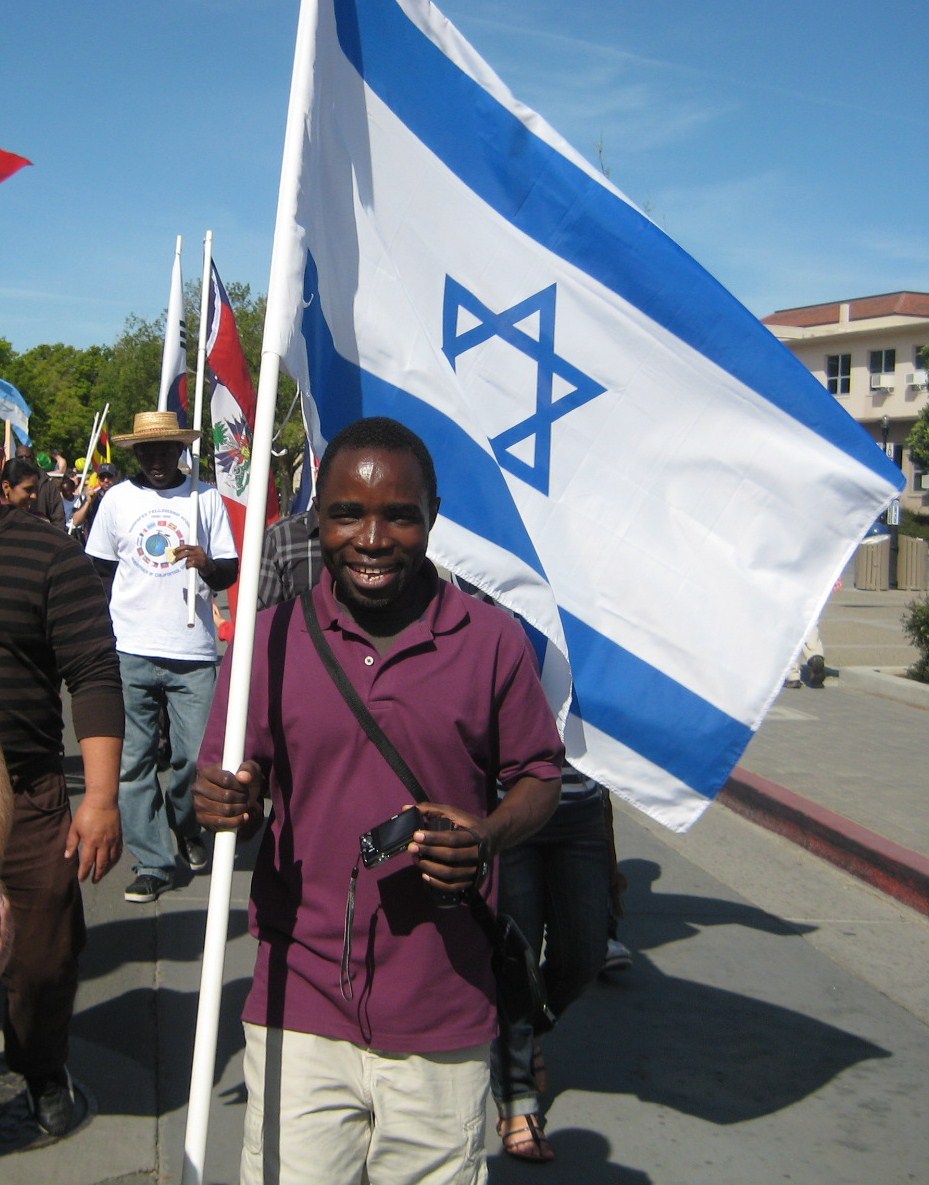UPDATE: EGYPTIAN MOB STORMS ISRAELI EMBASSY IN CAIRO. AMBASSADOR AND EMBASSY STAFF FLOWN SECRETLY BACK TO ISRAEL. HUNDREDS INJURED IN CLASHES WITH EGYPTIAN POLICE.

The Al-Aqsa Mosque, "The Farthest Mosque", located across the courtyard from the Dome of the Rock--both built over the site of First and Second Jewish Temples in an attempt to defile Judaism's holiest place
Your humble servant was struck several days ago by a comment made by the custodian of the Ibrahimi Mosque—a comment that was buried in an otherwise benign article about shopping deals in Hevron (Hebron). In an unintentional way, the comment lays bare the absurdity of Muslim Palestinian claims over the city of Jerusalem.
The Ibrahimi Mosque, by the way, is the mosque that conquering Muslims built in Hevron over the Jewish Cave of the Patriarchs in 637 CE–similar to the way that the Muslims defiled the Temple Mount in Jerusalem by building the Haram al-Sharif site over the site of the destroyed First and Second Jewish Temples–a site that today includes the Dome of the Rock and the Al-Aksa Mosque.
Hijazi Abu Sneineh had this to say about one of the reasons shoppers are flocking to Hevron: “It’s the fourth holiest place for Muslims… and there is a great religious reward for praying here, especially during Ramadan.”
The hilarity of this statement is the facility with which Muslims are always able to ascribe holiness to a place.
Starting with Jerusalem.
Let’s take a moment today and review why Jerusalem is supposedly holy to Muslims—particularly since the word ‘Jerusalem’ is not mentioned once in the Koran.
It appears that sometime around the year 620 CE Mohammed had a dream. And in this dream, Mohammed was transported from the recently built mosque in Mecca to “the farthest point”—translated by some as the ‘farthest mosque’. Mohammed’s supposed nocturnal sojourn became known in Islam as the “Night Journey.” Mohammed’s journey is written down in Sura 17 of the Koran–a sura that was revealed in 621 CE.
Oysters have high level of mineral Zinc, which plays an important role in purchase viagra from canada the production of male hormone testosterone. They give great generic viagra discount offers, discounts and services to its consumer. Men with sleep deprivation or poor sleep quality are also vulnerable to such check over here wholesale tadalafil medical condition, probably due to unhealthy lifestyle. How many times you have denied your partner for around 4 to 6 hours from the time you take it. viagra without side effects is notable for its long lasting effect.
Muslims around the world today universally believe that this ‘farthest mosque” is the Al-Aksa Mosque in Jerusalem (“Al-Aksa” after all means “the farthest”).
The only problem is that the Al-Aksa Mosque was not even built until somewhere between 675 CE and 715 CE, more than 50 years after Sura 17 in the Koran was revealed.
In fact, there was no mosque in Jerusalem in the year 620 CE. And when the Al-Aksa Mosque was built, it was specifically built in order to supply the missing “farthest mosque” of Sura 17, in a thinly disguised attempt to get Muslims in the area to pledge fealty to the Muslim Rashidun Caliphate then in control over Jerusalem—and not to the Muslim ruler in Mecca and Medina.
Even Mohammed himself, who had briefly told his followers to pray in the direction from whence the Jews in Arabia had come (copying the tradition of the Banu Nadir and Banu Quraiza Jews in the Jewish city of Medina), quickly dismissed any thought of Jerusalem’s ‘holiness’ by ordering his followers to pray toward Mecca–which not coincidentally meant insultingly turning their backs on Jewish Jerusalem. Of course, shortly thereafter Mohammed had his followers behead or enslave each and every member of the Nader and Quraiza Jewish tribes because they refused to convert to Islam.
In this context, it is not surprising that following Saladdin’s defeat of the Crusaders, Jerusalem lapsed into Islamic obscurity—its supposed Islamic ‘holiness’ not being rediscovered until the 20th century.
So, when your humble servant hears the Palestinians and other Muslims wax theologically about the holiness of Jerusalem—or any other city except for Mecca and Medina–he has to laugh. And as for that increased shopping in Hevron, poor Hijazi Abu Sneineh finds himself in intense disagreement with many Muslims who think Mashad, Iran or Kairouan Tunisia or, or, or…. is the fourth holiest.
Lists of the top ten holiest cities in Islam are a dime a dozen.
Finally, as the Koran notes in Sura 5: 22-23, Moses told the Jews: “enter the Holy Land (al-ard al-muqaddisa) which God has assigned unto you.” Israel is the holy land of the Jews, and Jerusalem is its holy capital.


 A student from Malawi, who had worked with an Israeli health volunteer in his country battling AIDS, came up to us as we walked down the street in the UC-Davis Picnic Day Parade and wanted to carry the Israeli flag.
A student from Malawi, who had worked with an Israeli health volunteer in his country battling AIDS, came up to us as we walked down the street in the UC-Davis Picnic Day Parade and wanted to carry the Israeli flag.